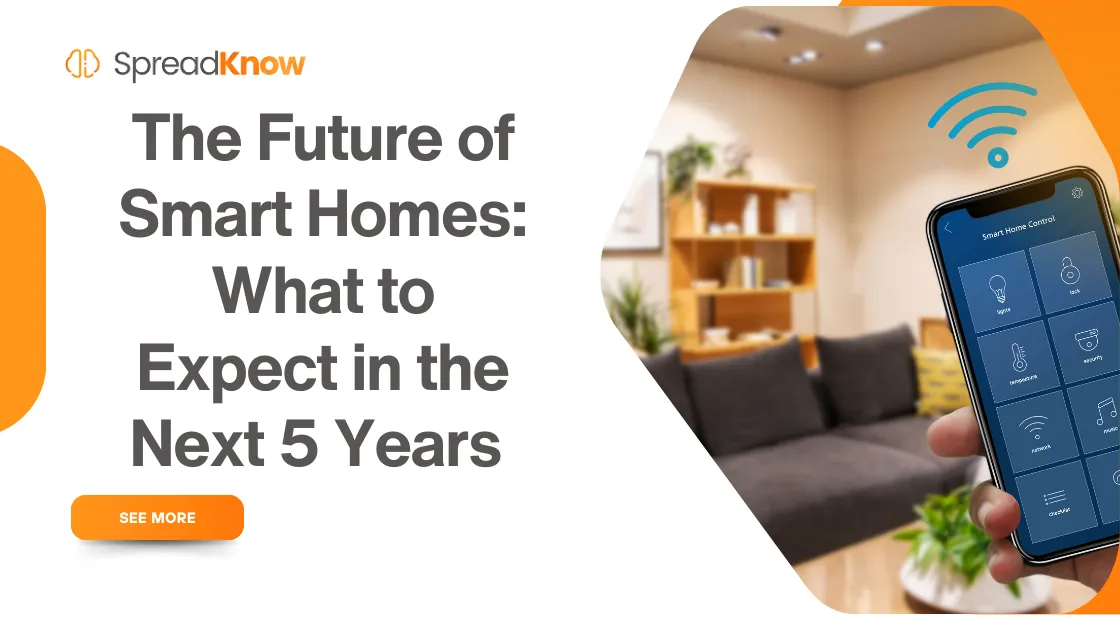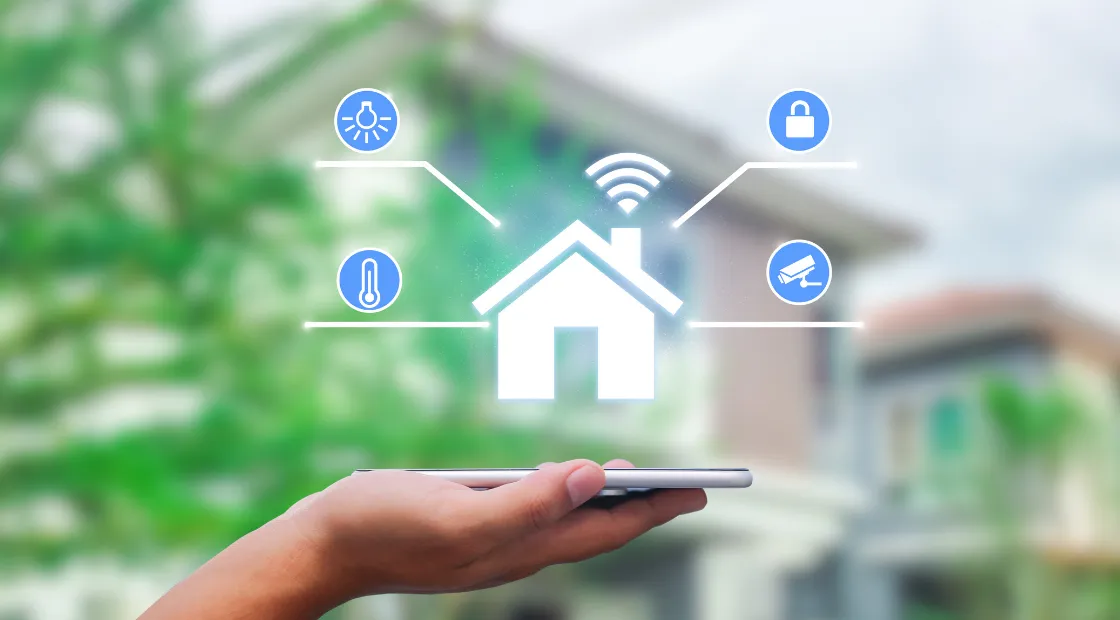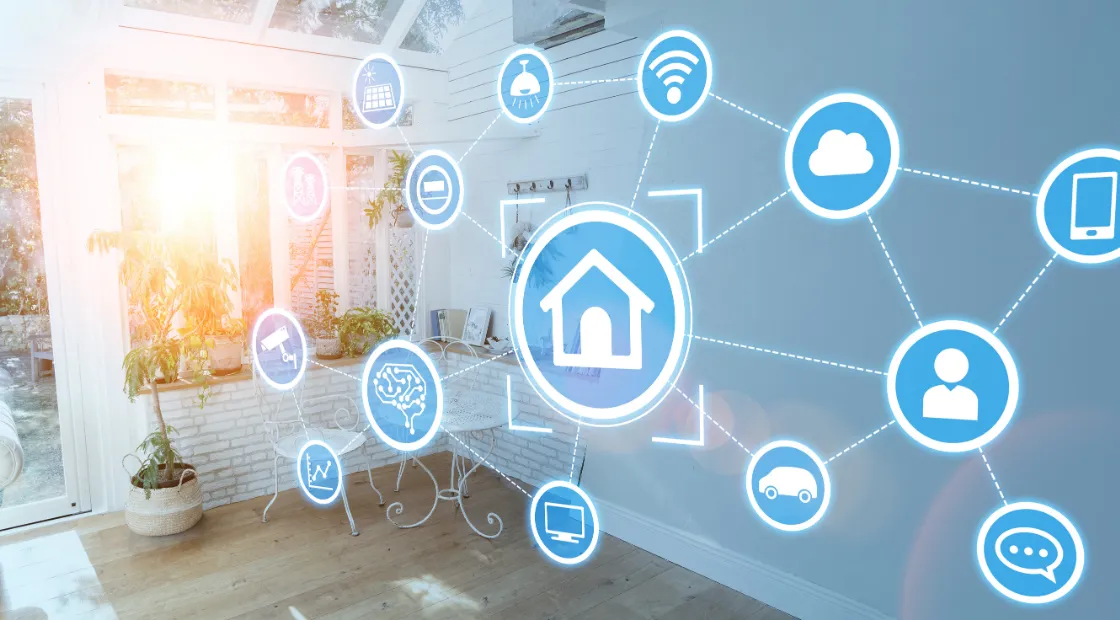The Future of Smart Homes: What to Expect in the Next 5 Years

The future of smart homes is no longer a distant vision but a rapidly evolving reality, poised to redefine how we live, interact, and thrive in our personal spaces.
Anúncios
Over the next five years, advancements in artificial intelligence, connectivity, sustainability, and user-centric design will converge to create living environments that are intuitive, efficient, and deeply integrated into our daily lives.
This article explores the transformative trends shaping smart homes, offering a glimpse into a world where technology anticipates needs, enhances security, and champions eco-conscious living.
What will your home look like in 2030, and how will it adapt to your unique lifestyle?
As we progress, the integration of smart home technology will not just be a luxury but a necessity for modern living.
Anúncios
The focus will shift towards making these technologies accessible to everyone, ensuring that they enhance quality of life across diverse demographics.
AI-Powered Homes: The Brain Behind the Walls
Artificial intelligence is the cornerstone of the future of smart homes, evolving from basic automation to sophisticated systems that learn and adapt.
Imagine a home that doesn’t just respond to voice commands but anticipates your needs based on behavioral patterns.
By 2030, AI will enable homes to analyze data from connected devices—thermostats, lights, appliances—to optimize energy use, predict maintenance needs, and even suggest meal plans based on your fridge’s inventory.
For example, consider Sarah, a busy professional whose AI-driven home notices she’s running late.
It adjusts her thermostat to save energy, preheats her oven for dinner, and dims lights to create a calming ambiance when she arrives.
A 2024 study by Gartner predicts that by 2028, 70% of smart homes will incorporate generative AI, enabling hyper-personalized experiences.
This isn’t just about convenience; it’s about creating environments that feel like an extension of ourselves.
Unlike today’s clunky voice assistants, tomorrow’s AI will engage in natural, context-aware conversations, making homes feel like collaborative partners rather than programmed machines.
Additionally, the integration of AI will lead to more efficient energy management, reducing costs and environmental impact.
This evolution will not only make homes smarter but also more sustainable.
| AI Feature | Current Capability (2025) | Projected Capability (2030) |
|---|---|---|
| Voice Interaction | Basic command recognition | Contextual, multi-turn dialogues |
| Predictive Automation | Limited to schedules | Behavior-based, proactive adjustments |
| Energy Optimization | Manual settings or basic sensors | Real-time, AI-driven efficiency |
Connectivity: The Internet of Everything
The backbone of the future of smart homes lies in seamless connectivity.
The rollout of 6G networks by 2029 will supercharge device communication, enabling near-instantaneous data transfer and ultra-low latency.
This means your smart refrigerator, security cameras, and lighting systems will work in perfect harmony, responding to commands in milliseconds.
Picture a scenario where your home’s sensors detect a delivery drone approaching.
The system unlocks a secure porch compartment, notifies you via your smartwatch, and logs the package’s contents—all without you lifting a finger.
Interoperability will also take center stage.
Today’s smart homes often suffer from fragmented ecosystems—think Alexa not playing nicely with Google Home.
By 2030, universal standards like Matter and Thread will ensure devices from different brands communicate effortlessly.
This shift will empower consumers to mix and match devices without fear of compatibility issues, creating a more cohesive and user-friendly experience.
Moreover, enhanced connectivity will facilitate the integration of emerging technologies, such as augmented reality, into our daily lives.
This could lead to new ways of interacting with our homes, making them even more responsive and personalized.
+ Recover Deleted Photos Fast: Easy Tools That Really Work
Sustainability: Green Living, Redefined
Smart homes are set to become champions of sustainability, addressing the growing demand for eco-conscious living.
With climate change concerns intensifying, homes will integrate renewable energy solutions like solar panels and battery storage systems, managed by AI to maximize efficiency.
For instance, a smart home in 2030 could redirect excess solar energy to charge an electric vehicle during peak sunlight hours, reducing reliance on the grid.
Innovations in materials will also play a role.
Smart windows with electrochromic glass will adjust tint to regulate heat, cutting HVAC costs by up to 20%, according to a 2024 report by the U.S. Department of Energy.
These advancements will make sustainability accessible, not just a luxury for the affluent.
Think of a smart home as a living organism, constantly adapting to minimize its environmental footprint while maximizing comfort.
| Sustainability Feature | Benefits | Adoption Rate by 2030 |
|---|---|---|
| Solar Energy Integration | Reduces electricity bills | 40% of U.S. smart homes |
| Smart Windows | Lowers HVAC costs | 25% of new builds |
| AI Energy Management | Optimizes consumption | 60% of smart homes |
Additionally, the shift towards sustainable technologies will not only benefit the environment but also lead to significant cost savings for homeowners.
This dual advantage will encourage wider adoption of smart home technologies.
Security: Fortresses of the Future
As homes become more connected, security will evolve from reactive to proactive.
The future of smart homes will leverage AI-driven surveillance systems that don’t just record but predict potential threats.
Imagine a system that notices an unfamiliar face lingering near your property and cross-references it with public databases in real-time, alerting you before an incident occurs.
Biometric locks, using facial recognition or even gait analysis, will replace traditional keys, offering unparalleled security.
Privacy, however, remains a critical concern.
With data breaches making headlines, manufacturers will prioritize decentralized data storage and blockchain-based encryption to protect user information.
By 2030, smart homes will offer “privacy dashboards” where homeowners can monitor and control what data their devices share, putting power back in the hands of users.
Moreover, the rise of smart security systems will empower homeowners to take control of their safety, allowing for real-time monitoring and alerts through mobile devices.
This added layer of security will provide peace of mind for families everywhere.

Health and Wellness: Homes That Heal
The intersection of technology and well-being is an exciting frontier for the future of smart homes.
In the next five years, homes will actively contribute to physical and mental health.
Smart mirrors could analyze your skin’s condition, recommending skincare routines or flagging potential health issues like vitamin deficiencies.
Air quality sensors will detect pollutants and automatically adjust ventilation, crucial in urban areas where air pollution is a growing concern.
Mental health will also benefit.
Imagine a home that detects stress through wearable devices and adjusts lighting to soothing hues or plays calming music.
For example, John, a remote worker, steps into his smart home after a hectic day.
His system senses elevated heart rate, dims the lights to a warm glow, and cues a meditation playlist.
These subtle interventions will make homes not just places to live but sanctuaries for well-being.
Additionally, the growing focus on health and wellness in smart home technology will likely lead to partnerships with healthcare providers.
This could facilitate remote health monitoring and personalized wellness plans tailored to individual needs.
Accessibility: Inclusive Design for All
The future of smart homes will prioritize inclusivity, ensuring technology serves everyone, regardless of age or ability.
Voice-activated systems will become more intuitive, assisting those with mobility challenges.
For instance, a smart home could guide a visually impaired person through their space using spatial audio cues, describing obstacles in real-time.
Aging populations will benefit from fall-detection sensors and health-monitoring wearables integrated into the home’s ecosystem, alerting caregivers to emergencies.
This focus on accessibility will democratize smart home technology, moving it beyond tech-savvy early adopters.
Manufacturers will design interfaces that are intuitive for children, seniors, and those with disabilities, ensuring no one is left behind in the smart home revolution.
Moreover, the push for inclusive design will foster innovation, leading to new products that cater to diverse needs and enhance the overall user experience.
This will create a more welcoming environment for everyone.
++ Master a New Language with Online Language Courses
Challenges and Ethical Considerations
While the future of smart homes is bright, it’s not without hurdles.
The digital divide remains a significant barrier—rural areas and low-income households may struggle to access these technologies.
Policymakers and companies must collaborate to subsidize costs and expand broadband access.
Ethical concerns also loom large.
Who controls the data generated by your smart home?
The risk of surveillance capitalism, where companies exploit user data for profit, demands robust regulations.
Moreover, the environmental cost of producing smart devices—think rare earth metals and e-waste—must be addressed.
Manufacturers will need to adopt circular economy principles, designing products for longevity and recyclability.
The question isn’t just how smart our homes can become, but how responsibly we can build them.
Additionally, fostering transparency in data usage and ensuring user consent will be crucial in building trust with consumers.
This will be essential for the sustainable growth of smart home technologies.

The Human Touch: Balancing Tech and Emotion
Smart homes risk becoming cold, sterile spaces if technology overshadows human connection.
The future of smart homes must strike a balance, using technology to enhance, not replace, emotional experiences.
Picture a home that curates a nostalgic slideshow of family photos on a digital wall when it senses a gathering, fostering warmth and connection.
Like a trusted friend, a smart home should amplify the human experience, not dominate it.
Moreover, integrating elements that encourage family interaction, such as shared digital spaces for gaming or movie nights, will strengthen bonds among household members.
This approach will transform smart homes into not just technological hubs but also centers of connection.
For more insights into the evolving landscape of smart home technology, check out TechCrunch.
Conclusion: A New Era of Living
The future of smart homes is a tapestry of innovation, weaving together AI, connectivity, sustainability, security, health, and accessibility.
In five years, our homes will be more than shelters—they’ll be intelligent partners, adapting to our needs, protecting our planet, and nurturing our well-being.
As we stand on the cusp of this transformation, the challenge lies in ensuring these advancements are inclusive, ethical, and human-centric.
The smart home of 2030 isn’t just a technological marvel; it’s a reflection of our aspirations for a better, more connected life.
This resource will keep you updated on the latest trends and innovations shaping the future of smart living.
